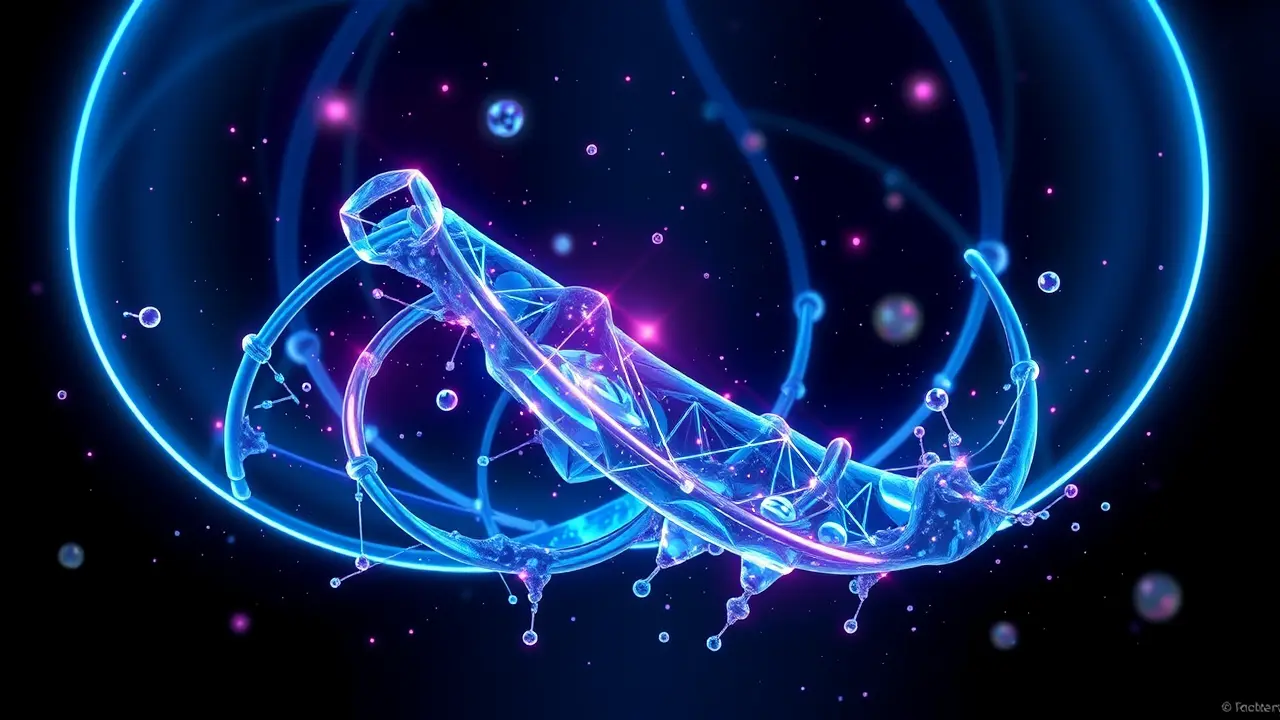Physicists discover strange spinning crystals that behave like living matter
In a discovery that feels ripped from the pages of a cosmic playbook, physicists have pulled back the curtain on a bizarre new class of materials they're calling 'rotating crystals'—solids composed not of static, orderly atoms but of spinning particles that exhibit a startling repertoire of behaviors typically reserved for the living world. Imagine a crystal that doesn't simply stretch when you pull it but contorts and twists like a dancer; a material that, when stressed to its limit, doesn't just crack but shatters into a constellation of fragments, only to then perform a near-miraculous act of self-assembly, pulling itself back together as if guided by an invisible, intelligent hand.This isn't science fiction; it's the frontier of condensed matter physics, a field suddenly buzzing with the implications of what can only be described as emergent life-like complexity arising from simple mechanical rules. The existence of these spinning systems challenges our most fundamental textbooks, which have long defined crystals by their periodic, repeating lattices in space.Here, we have a lattice that repeats in both space *and* time, a dynamic architecture where the constant, coordinated spin of its constituent particles gives rise to properties that are neither fully solid nor fully fluid, but something entirely new—a phase of matter that could be the key to understanding everything from the origins of biological self-organization to the development of next-generation adaptive materials. Think of the ambitious vision behind SpaceX's interplanetary missions, where complex systems must self-diagnose and repair in the harsh void of space; these rotating crystals offer a tantalizing glimpse into a future where our bridges, buildings, and even our spacecraft could be constructed from materials that sense damage and reconfigure themselves, healing cracks before they propagate.The underlying principle is one of non-equilibrium thermodynamics; these crystals are constantly consuming and dissipating energy to maintain their ordered, spinning state, much like a biological cell does, placing them firmly in the realm of what physicists call 'active matter'. This is the same fundamental physics that governs the mesmerizing, synchronized swarming of starlings or the coordinated motion of bacterial colonies, suggesting a universal set of rules that bridges the inert and the animate.Researchers are now racing to model the full potential of these systems, theorizing about applications in programmable matter that could reshape itself on command, or in quantum computing where topological protection—a property inherent in certain spin systems—could shield fragile quantum information from decoherence. The philosophical ramifications are equally profound, nudging us closer to answering the age-old question of how life emerges from non-life, hinting that the spark of animation might not be a magical ingredient but a natural, and perhaps even common, consequence of matter organizing itself under the right energetic conditions. It’s a humbling reminder that the universe, in its infinite creativity, still holds fundamental surprises that force us to reconsider the very definitions of life and matter, pushing human curiosity ever onward, from the subatomic spin of a crystal to the far-reaching dream of stepping onto Mars.
CO
CosmicSkeptic7 hours ago
this is wild but also my brain hurts trying to get it tbh, feels like they're describing magic with extra steps
0
QU
QuantumQuirk11 hours ago
wait what this is wild tbh, materials that act alive idk if i get it but it sounds cool
0
© 2025 Outpoll Service LTD. All rights reserved.
